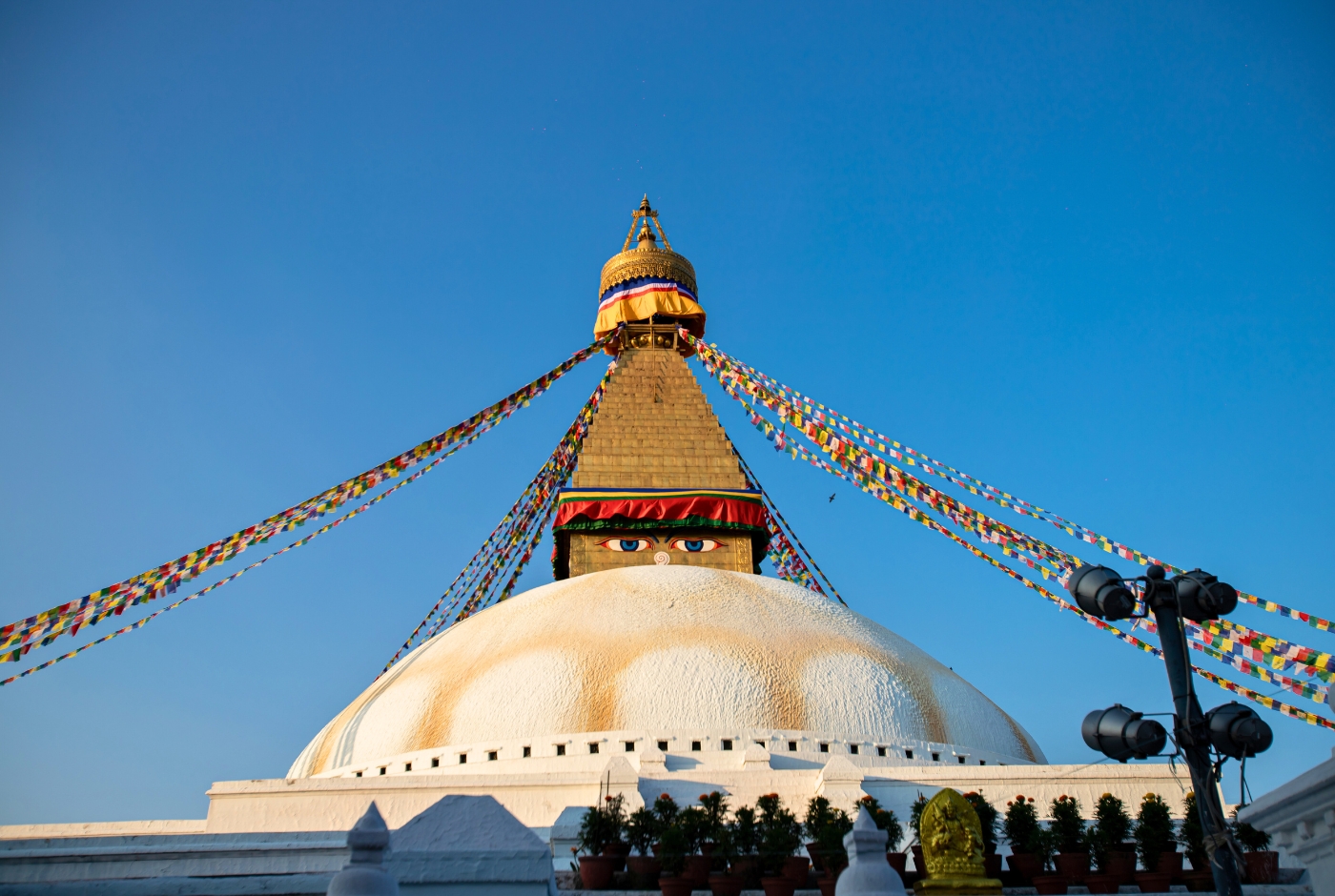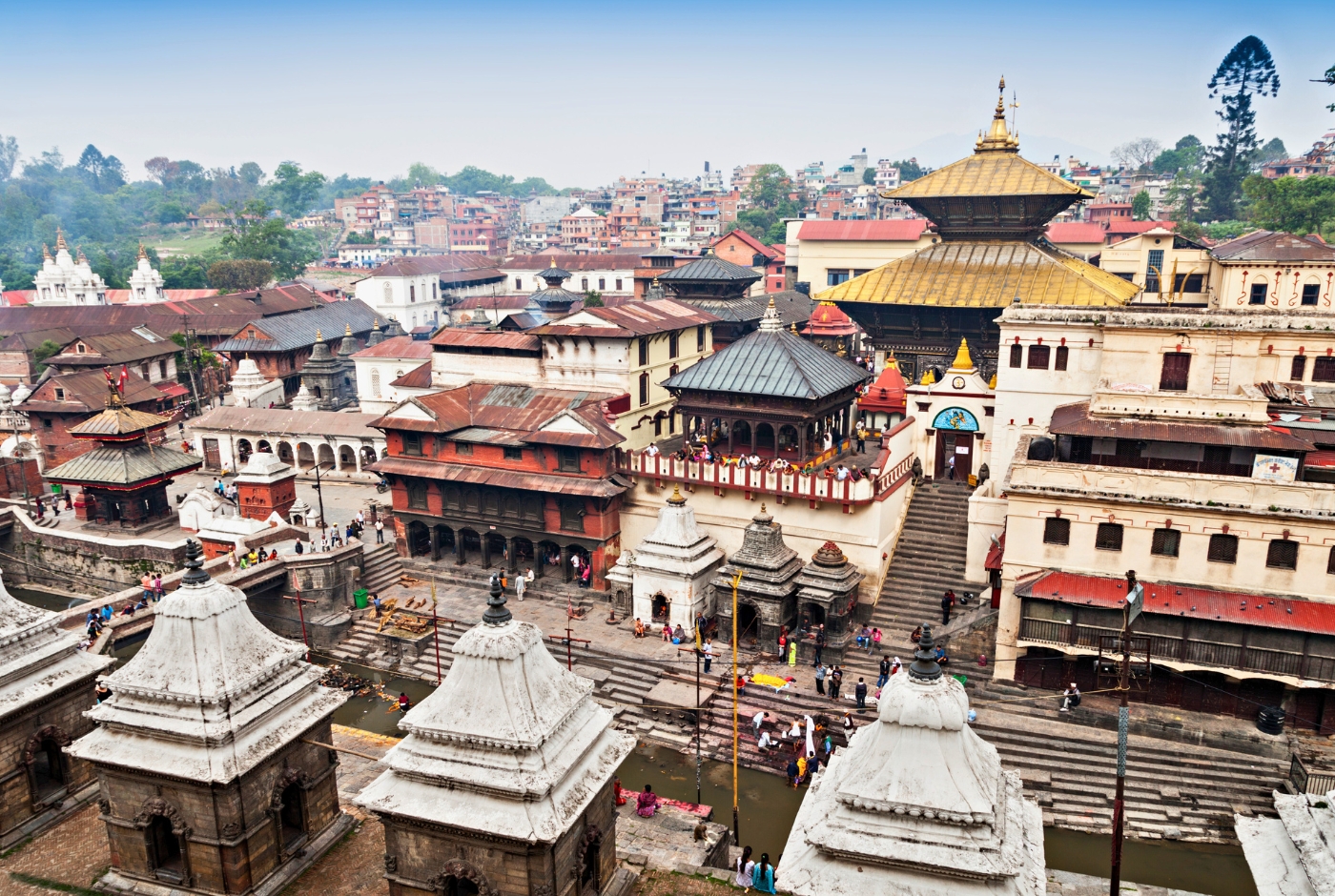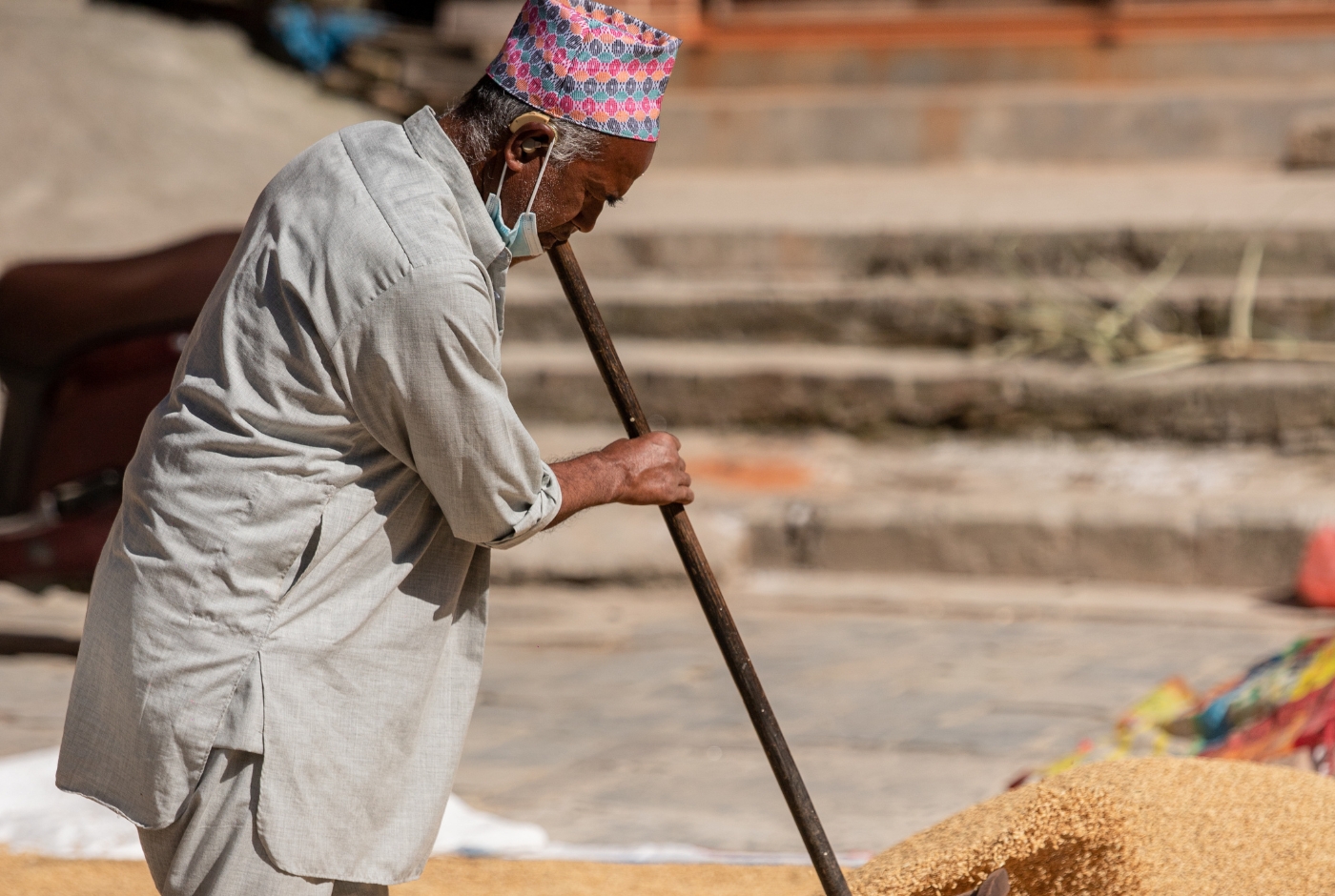Welcome to Nepal, the Himalayan land of ancient art and architecture, diverse ethnic cultures, and breathtaking historical landmarks!
Nepal is renowned for being the destination for Himalayan adventures. The Himalayas in the north, with its numerous trekking trails, provide varying levels of trekking tours for travel enthusiasts. For those who are more inclined towards cultural tours and want to explore the nation's historical places, we recommend the 7 UNESCO World Heritage Sites Tour package.
Our UNESCO World Heritage Site tour takes you to seven significant heritage sites in Kathmandu, offering a glimpse into Nepal's rich cultural heritage. Our Escape Himalaya tour guide will accompany you on this fantastic tour of Kathmandu in a private vehicle. Following our tour itinerary will ensure a smooth trip for you. At each of these sites, they will share historical backgrounds and other interesting anecdotes.
Kathmandu's seven historical sites were designated as UNESCO World Heritage sites in 1979, which significantly contributed to their preservation and restoration projects. The list includes two Buddhist pilgrimage sites (Swoyambhunath Stupa and Boudhanath Stupa), two Hindu pilgrimage sites (Pashupatinath Temple and Changunarayan Temple), and three royal palace squares of Malla Kings - Kathmandu Durbar Square (King Pratap Malla, 17th century), Patan Durbar Square (King Siddhi Narsingh Malla, 17th century) and Bhaktapur Square (King Yakshya Malla, 1427).
While the courtyards of the Malla Kings showcase marvelous Nepalese architecture, pilgrimage sites like Swoyambhu, Pashupatinath, Boudha, and Changunarayan depict the highly spiritual history of Nepal. Among the seven UNESCO sites, the Changunarayan Temple is the oldest, having been built in the 4th century.
If this is your first visit to Nepal, we highly recommend this tour to explore the enchanting historical and cultural sites of Kathmandu Valley. As many of these sites are religious centers, we recommend dressing respectfully and with consideration for the local culture.
Swoyambhunath Stupa (Swoyambhu Mahachaitya)

Swoyambhunath stupa, a sacred Buddhist site situated on a hill west of Kathmandu, dates back to the fifth century. It is one of the three significant Buddhist stupas in Nepal, the other two being the Boudhanath Stupa and the Namo Buddha Stupa.
The ancient stupa, renowned for its self-sprung nature, has an interesting backstory regarding its creation. According to legend, it was first discovered by Manjushri bodhisattva when he noticed a striking light emitting from the site of Swoyambhu. Upon approaching the site, he found a mystical lotus radiating eternal light and realized the site's sacredness. As the Kathmandu Valley was a lake at that time, Manjushri created a gorge at Chobar and drained the water, thus making the Kathmandu Valley accessible to devotees.
Swoyambhunath stupa is a massive structure with five gilded Buddha shrines around it. It also has Tara shrines carved into its dome. Additionally, the premises feature several shrines, stupas, monasteries, rest houses, and cafes. Every morning at daybreak, worshippers climb up the long staircase (eastern side) to pay homage to the stupa and participate in morning prayer sessions.
Pashupatinath Temple

Pashupati is one of Lord Shiva's avatars (manifestation) who is worshipped as the lord of animals. Pashupatinath temple, therefore, is the abode of this manifestation of Shiva and is a prominent Hindu pilgrimage site. Situated on the banks of the Bagmati River, the temple dates back to the fifth century. The sacred site, located east of Kathmandu, is revered by Hindus and Buddhists alike.
Pashupatinath Temple's extensive holy grounds (246 hectares) comprise more than 500 shrines, including cremation sites, caves, and old-age homes. The main temple enshrines a Shiva linga, which is believed to have wish-fulfilling power. Devotees from around the world visit Nepal to pay homage to Lord Shiva.
Although it is packed with devotees year-round, the number of visitors increases exponentially during the festivals of Teej and Mahashivratri. Teej celebrates the sheer dedication of Goddess Parvati to her husband, Lord Shiva. It commemorates their holy reunion. Mahashivratri, on the other hand, celebrates Lord Shiva's cosmic dance (tandava) and his marriage to Goddess Parvati.
Boudhanath Stupa (Khasti Chaitya)

On the northeast side of Kathmandu stands the gigantic Boudhanath Stupa, which was built in the 5th century during King Manadeva's reign (Lichhavi dynasty). Regarded as the center of Tibetan Buddhism, the stupa and its surrounding premises served as the primary hub for Buddhist pilgrims for many centuries. The 36-meter-high Boudhanath stupa, built on an area of 6,756 square meters, is the biggest in Nepal. It contains the remains of Shakyamuni Buddha and Kashyapa Buddha, as well as many other relics.
The Ajima shrine (west of the stupa) is said to be even older. It is dedicated to the goddess Ajima, who is regarded as the protector of children. As you circumambulate the massive dome, you will find the shrine on your right. There are many Buddhist monasteries in Boudhanath, including Shechen Gompa, Samtenling Gompa, and Guru Lhakhang Gompa, among others.
Around the stupa, where once stood rows of traditional houses made of mud and wood with thatched roofs, now stand modern buildings, mostly cafes, restaurants, and shops selling religious artifacts.
Changunarayan Temple

The oldest temple of Nepal (4th century) dedicated to Lord Vishnu's Narayan avatar lies 12 kilometers east of Kathmandu in the Bhaktapur district. Changunarayan Temple is known for its ancient architecture, intricate wood carvings, inscriptions, and shrines. Perched on the Changu hill, this ancient temple is revered by both Hindus and Buddhists.
Apart from the main temple, which enshrines an idol of Garuda Narayan, there are numerous smaller shrines, historical inscriptions, and sculptures surrounding the temple, exemplifying Nepal's rich cultural heritage. A prominent inscription that still exists is the pillar inscription erected by King Manadeva in the 5th century.
There is a small shrine featuring a four-handed Bhimsen idol (Chaturbahu Bhimsen) located near the temple premises. It is deemed the only four-handed idol of Bhimsen in the entire valley.
On the way to the temple, you will see Nepal's rural life with vast expanses of green fields, thatched houses, and friendly locals going about their daily lives.
On clear days, you can see some prominent Himalayan peaks (Langtang, Manaslu, Annapurna, etc) from the temple's viewpoint.
Kathmandu Durbar Square (Basantapur Durbar Square)

Also known as Basantapur Durbar Square, this historical site dates back to the Lichhavi dynasty (4th-8th century). Although the Lichhavi kings laid the foundation, it was expanded by the Malla kings, especially during King Pratap Malla's reign in the 16th century. After the unification of Nepal by Prithvi Narayan Shah, it became the center of Shah kings.
The square has many ancient buildings, temples, and shrines with interesting historical backgrounds. The most notable structure is the Nautalle Durbar (nine-story palace), built by Prithvi Narayan Shah in 1779. Other noteworthy structures include Kumari Bahal, the abode of Nepal's living goddess (a manifestation of Durga), a Hanuman statue built-in 1672 (Hanuman Dhoka), a Kaal Bhairav shrine, Taleju Temple (built in 1564), Kasthamandap (7th century), and others.
A visit to Kathmandu Durbar Square is a must for those who want to explore Nepal's age-old architectural designs, intricate wood carvings, and temples. The old tourist hub of Kathmandu, Jhochhen Tole (Freak Street), is also nearby. There are many cafes and restaurants around Jhochhen, from where you can enjoy the Durbar's view while indulging in local delicacies.
Patan Durbar Square
Patan Durbar Square, the royal palace of the Malla kings of Lalitpur, dates back to the 3rd century (Kirat dynasty). After the foundations were laid during the Kirat dynasty's rule, King Siddhi Narsing Malla oversaw the construction of the majority of the monuments in the 17th century.
This exquisite palace square is 6.5 kilometers south of Thamel. It's a unique experience visiting the square, which is known for its Newar architectural monuments. The square comprises a multitude of ancient monuments, courtyards, and temples, including both Hindu and Buddhist structures.
Some significant structures of Patan Durbar Square include the palace of King Siddhi Narsing Malla, the Vishwanath Temple, the Krishna Mandir, the Bhimsen Temple, and the Taleju Bhawan Temple, among others. The Buddhist temples of Patan include the Golden Temple (Hiranya Varna Mahavihar, 12th century), Mahaboudha Temple (16th century), Rudra Varna Mahavihar (6th century), Rato Machhindranath Temple (17th century), and Min Nath Jestha Varna Mana Vihar (Lichhavi period).
Among these holy temples, the oldest is "Shivadev Samskarita Rudravarna Mahavihar." Initially built by King Shivadev (Lichhavi king) in the 6th century, the temple was renovated later by King Rudradev.
Bhaktapur Durbar Square

Bhaktapur Durbar Square is the epitome of Nepal's rich cultural heritage of the 13th century. It was built during the reign of King Jayasithi Malla. However, most of the structures, especially temples, were added later in the sixteenth century. The grandest of all palace squares in the Kathmandu Valley, it is built on an area of 6.8 square kilometers.
Bhaktapur Durbar Square is 15 kilometers from Thamel, the tourist hub of Kathmandu city. At the square, you can see many monuments of the Malla dynasty, including palaces, temples, shrines, and statues. Some significant structures are Char Dham (replica of Indian temples), Nekhanjya Lyaku Palace (1689), Golden Gate (1751-1754), 55 Window Palace (1427), Nyatapola temple (1702), Bhupatindra Malla's statue (1769), Taleju Bell (1737), Silu Mahadev Temple (1650s) etc.
Nyatapola Temple, built by King Bhupatindra in 1702, is the tallest temple in Nepal. It has five platforms in descending order, upon which stands the five-story Siddhi Lakshmi temple.
A visit to Bhaktapur is also an opportunity to explore the Newar community of Bhaktapur and its rich traditional lifestyle.
Alternative Treks
Nagarkot Chisapani: The Chisapani Hike is a refreshing adventure just outside Kathmandu, offering jaw-dropping Himalayan views, lush forests, and cascading waterfalls. Wander through quaint villages, soak in the crisp mountain air, and witness golden sunrises over snow-capped peaks. Perfect for a quick escape, this trek blends nature, culture, and adventure into an unforgettable experience!
3 - hour Kathmandu Day Tour: Kathmandu Day Tour provides deep insight into various cultures and traditions of local people, intricate religious artworks, and the architecture of temples and historic structures.










